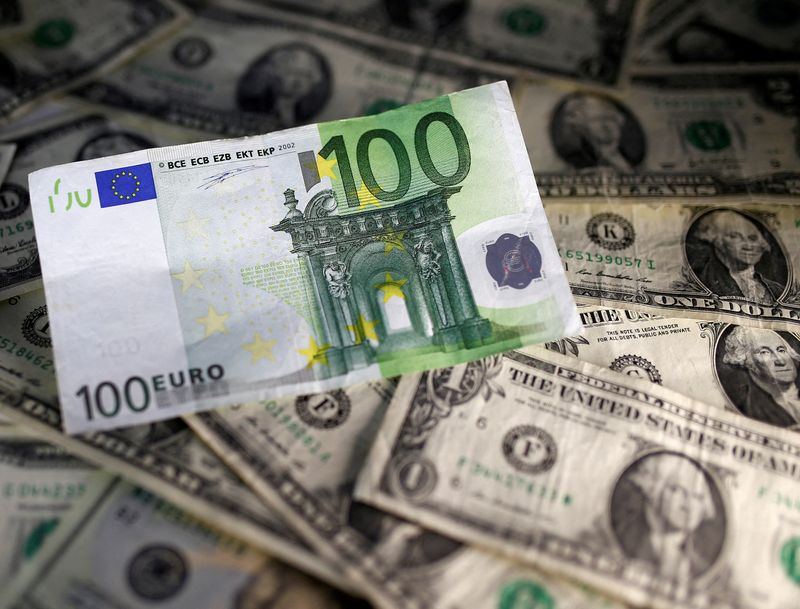By Tom Westbrook
SINGAPORE (Reuters) -The dollar steadied on Thursday helped by a surprise interest rate cut in South Korea, while the yen eyed its strongest week in three months on growing bets Japan hikes rates in December.
The yen weakened slightly through the Asia session. But at 151.59 per dollar, it is up 2.4% this week and has recovered losses suffered since the U.S. election. Markets see about a 55% chance the Bank of Japan hikes rates next month.
“Stronger than expected Japanese inflation readings and the risk that the Fed may cut rates again in December have added to the downside pressure on dollar/yen,” said Rabobank senior currency strategist Jane Foley in a note to clients.
South Korea’s won was a little weaker too, with dealers reporting authorities had steadied it, after the central bank cut rates at a second straight meeting – an outcome only four of 38 economists polled by Reuters had foreseen.
At $1.0553, the euro clung to what had been its sharpest rise in four months on Wednesday following hawkish remarks from European Central Bank board member Isabel Schnabel.
She told Bloomberg that rate cuts should be gradual and move to neutral, not accommodative, territory, prompting investors to pull back on rate cut expectations and buy the common currency.
“Not only has downward momentum faded, but upward momentum is also beginning to build,” said Quek Ser Leang, strategist at UOB in Singapore.
“We view the current price action as part of a rebound that could potentially reach $1.0650.
Inflation readings due later in the session in German will offer the next test while eyes are also on France’s fragile coalition government, which is struggling to pass a budget.
HOLIDAY LULL
Broad trade was lightened due to the U.S. Thanksgiving holiday, though while the majors were in a bit of a lull there was some action in emerging markets.
The Mexican peso rose almost 1% after Donald Trump said on his Truth Social platform that Mexico’s president Claudia Sheinbaum had “agreed to stop migration through Mexico,” an issue Trump had linked to his pledge to impose tariffs.
Sheinbaum said she had laid out Mexico’s migration strategy, which is “not to close borders, but to build bridges.”
Russia’s rouble jumped back to the strong side of 110 per dollar as the Russian central bank said it would stop forex purchases until the end of the year to support the currency.
Brazil’s real collapsed to its lowest ever spot close and ten-year yields spiked 38.5 basis points on concern at the impact of tax cuts on a stretched budget.
Overnight U.S. yields had dropped, putting downward pressure on the dollar, after data showed U.S. personal consumption expenditure in line with expectations with a 0.2% monthly increase.
The dollar index was marginally higher on Thursday to 106.24.
Sterling climbed on the weaker greenback and held gains at $1.26, while the New Zealand dollar remained firm after a 50-basis point rate cut in Wellington on Wednesday was shallower than some market expectations for 75 basis points.

The Australian dollar drifted 0.2% lower to $0.6480 ahead of an 0855 GMT speech from Reserve Bank of Australia governor Michele Bullock, which is expected to offer guidance around the central bank’s sensitivity to inflation data.
“We think that if policy is discussed, a similar ‘cautious’ message is likely to be repeated with the RBA on a different path to many of its counterparts,” said Corpay strategist Peter Dragicevich.


